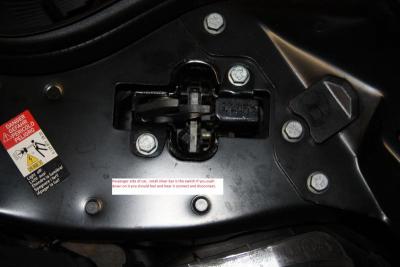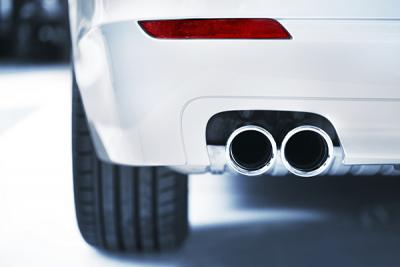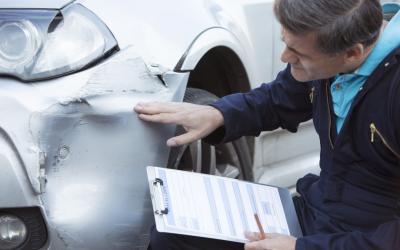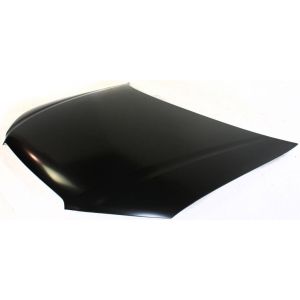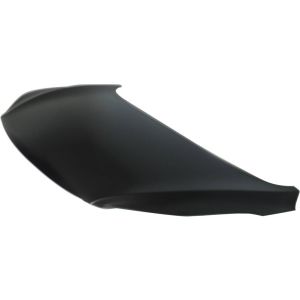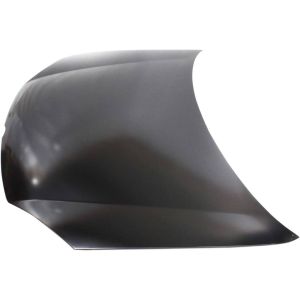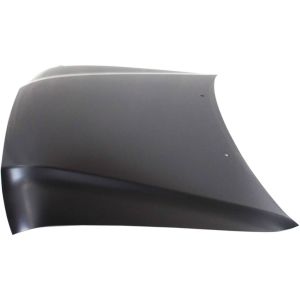Did you know almost 14% of car repairs involve the hood? If you're part of this statistic, don't worry. Changing a car hood might sound complicated, but it's simpler than you think.
This guide will show you how to identify the damage, pick the right replacement, and install your new hood. You'll learn what tools you need and how to align the hood perfectly.
With patience and guidance, you'll have your car looking as good as new in no time. So, let's dive in and get your hands dirty.
Key Takeaways:
- Hood damage can occur from car accidents, rusting, and hinge problems.
- To find the right hood replacement, select one made for your car model and ensure precise alignment with other parts.
- When inspecting the hood replacement, check for major dents or scratches, ensure padding and reinforcements are intact, and fix any unnoticed dents with filling primer.
- Prepping the hood for installation involves sanding, degreasing, and priming the surface. The hood should be in good shape before installation.
Why Is Your Car Hood Important?
Your car hood is crucial for a number of reasons, including protecting your engine from external elements and enhancing your vehicle's aesthetic appeal. That's why it's important to understand why your car hood is vital.
It's not just a piece of metal covering your engine - it's a shield against dirt, moisture, and other damaging elements. Besides its practical function, it also contributes to your car's overall look. A dented or damaged hood can decrease your vehicle's value and curb appeal. So, if your hood's seen better days, it might be time for a new hood.
By investing in a new hood, you're not only improving your car's appearance but also ensuring your engine's longevity and performance. Remember, a well-maintained car hood is integral to a well-functioning vehicle.
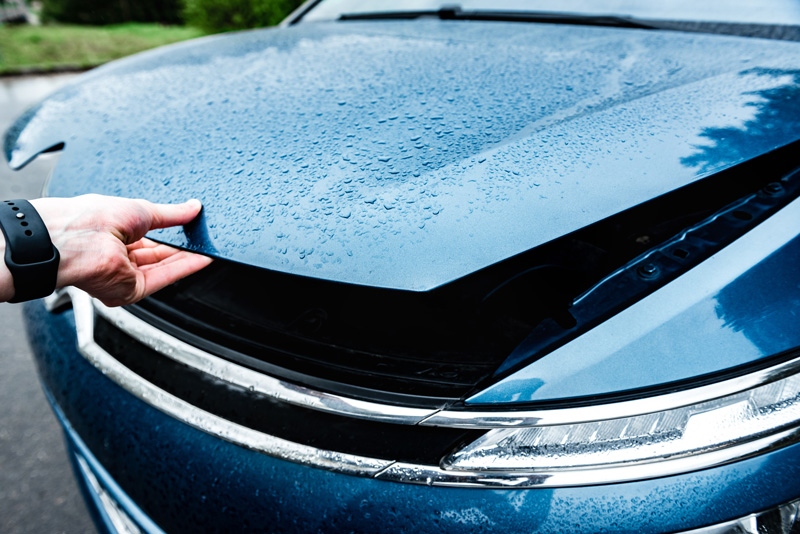
Types Of Hood Damage
When it comes to hood damage, there are several types you might encounter. You might notice hinge problems causing a rattling sound or a sudden hood pop-up. Dents from accidents or falling objects and rusting due to weather exposure are other common issues, all of which can reduce the lifespan and aesthetics of your car hood.
Hinge Problems
If the hood of your car starts making rattling sounds while driving, it's likely that you're dealing with hinge problems. These issues can be tricky to identify, but they're crucial when it comes to changing your hood.
Here are some details to keep in mind:
- Often, hinge problems are due to loose or rusted bolts. Try tightening them to see if it resolves the issue.
- If there's no improvement, the hinges themselves might be worn out and need replacement.
- In some cases, the hood might be misaligned with the rest of the body. Adjusting the bolts can help align it correctly.
Rusting and Corrosion
Despite addressing hinge problems, you might still face issues with rusting and corrosion, another common type of hood damage. This can occur due to exposure to moisture and harsh weather conditions, gradually eating away at the metal. Rusting and corrosion not only diminish the appearance of your car but also affect its resale value.
When you notice signs of rusting, it's time to consider a replacement hood. Visit a reputable body shop where professionals can guide you in choosing the right hood for your vehicle. A quality replacement hood can withstand weather conditions and resist rusting and corrosion longer.
Remember, the sooner you address rusting issues, the less likely you'll face more extensive, costly damage in the future.
Dents From Accidents or Fallen Objects
You might find yourself dealing with dents in your car hood, often caused by accidents or fallen objects. These dents can be quite unsightly, and even minor ones can significantly depreciate your car's value. It's crucial to address such damage promptly.
There are several types to keep in mind:
- Dents from accidents: These usually result from fender-benders or more serious collisions. They can range from small dings to large indentations that compromise the hood's integrity.
- Dents from fallen objects: Things like hail, tree branches, or even a stray baseball can inflict these.
- Badly damaged hoods: If your hood is seriously dented or warped, you might need to replace it entirely.
Recognizing the types of damage can help you determine whether to fix the dents or replace the hood altogether. Don't wait too long, though, as untreated dents can lead to further issues.
How To Find The Right Hood Replacement?
When looking for a replacement hood, it's essential to choose one specifically made for your car model. The right hood replacement can change your car's look and make it seem like new.
Start by knowing your car's make, model, and year. Use these details to filter your search when buying online or to provide specifics to the seller at a local store.
Ensure the replacement car hood fits well with your vehicle's design and color. Don't forget to check the material, as it should be durable enough to withstand harsh conditions.
Lastly, remember that the hood should align perfectly with the other parts of your vehicle for a secure fit. With careful consideration, you'll find the right hood replacement in no time.

What Tools Do You Need?
In the process of changing your car's hood, there are specific tools and equipment you'll need to have on hand. These tools are not excessively complicated or specialized, making the task quite manageable if you're even slightly handy.
You'll need to prepare the following:
- A wrench or socket set: This is essential to loosen and tighten the bolts on the hood.
- A prop rod: This is used to hold the hood up while you're working.
- A new hood: Ensure you have the correct replacement hood for your car model.
Steps to Consider When Removing the Old Hood
First off, it's crucial to carefully lift the hood into an upright position, ensuring it's secure before proceeding. Then, with your socket wrench, start removing the bolts attached to the hood. The bolts are usually located near the windshield on the corners of the hood.
Remember, it's best practice not to remove the hood brackets attached to the car's frame. While doing this, always ensure that you're holding the hood securely to prevent it from falling and causing damage to the front bumper cover.
Once the bolts are removed, you'll be able to lift the hood off the hinges. Be extra cautious during this step to avoid any injury or further damage to your car. To be more safe, we advice you to seek help from a friend.
Following these steps will ensure your old hood's safe and effective removal.
Steps to Consider When Installing the New Hood
After removing the old hood, you'll need to carefully examine your new part for any damages before proceeding with the installation. Ensure there are no dents, scratches, or deformations that could affect the fitting or appearance of your vehicle.
Now, let's go through the steps you'll need to follow for the installation:
- Align the new hood with the mounting brackets on your car. Having a friend help you with this part is a good idea to avoid any accidental damage.
- Secure the hood to the brackets using the bolts you removed earlier. Don't fully tighten them just yet.
- Carefully lower the hood to check alignment. Adjust as needed, then tighten the bolts.
Conclusion
Just like a knight dons his armor for protection and strength, your car needs a sturdy hood to shield its vital components. You've journeyed through the land of hood damage and replacements, armed with your tools and newfound knowledge.
Now, with a little grit and patience, you're ready to tackle the feat of changing your car hood. Go ahead, take the reins, and restore your steel steed to its former glory. Remember, every journey begins with a single step.
FAQs (Frequently Asked Questions)
How much does it cost to replace a hood of a car?
- The cost of replacing a car's hood can vary widely - on average, the cost can range from a few hundred to over a thousand dollars. The cost depends on many factors, such as the make and model of the vehicle, the material of the hood, and whether it is an aftermarket or OEM (original equipment manufacturer) replacement.
How long does it take to replace car hood?
- Replacing the hood is a process that can take anywhere from a few hours to a few days depending on your skills and experience. The turnaround time depends on factors such as the complexity of the job, the specific make and model of the vehicle, and most importantly, your experience.
What tools do you need to take a hood off a car?
- The standard tools you will need are the following - a wrench set: for removing nuts and bolts, a screwdriver: for removing screws and other fasteners and a partner. Having a helper can be useful, especially when removing and fitting the bonnet due to its size and weight.

